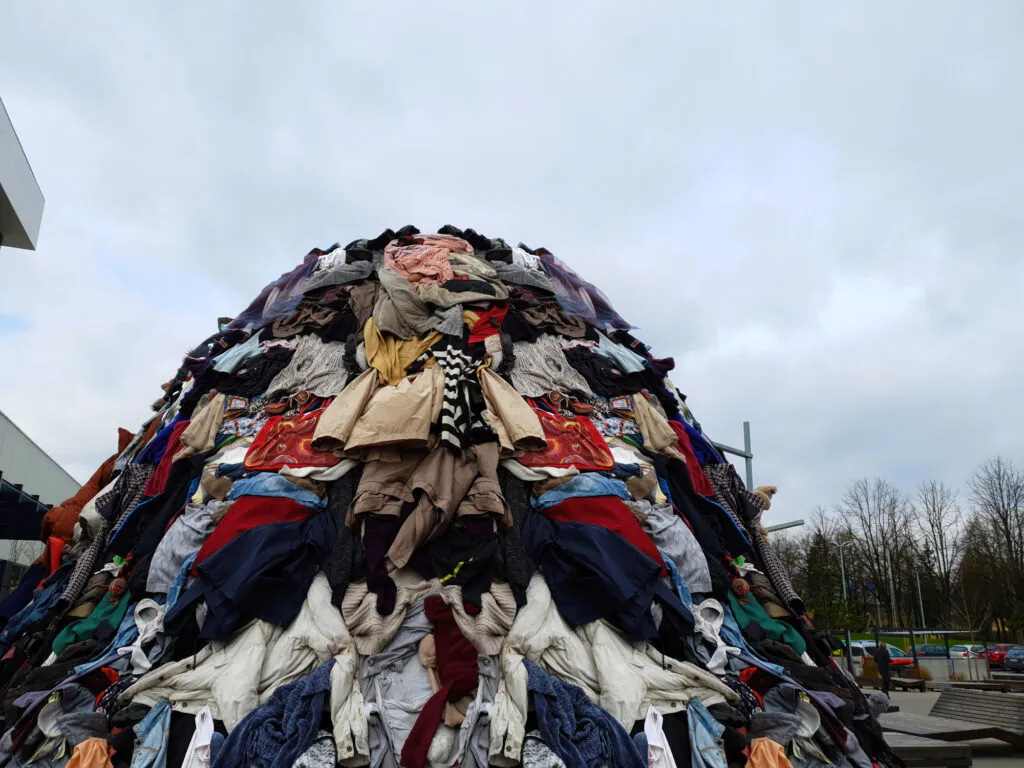Introduction to the Fashion Retail Industry
The global fashion industry has undergone significant changes over the past few years. Today, fashion is much more than just functional clothes; it is an expression and extension of oneself. It is this idea that is driving purchases in the fashion industry. An average person now owns more clothes than they used to a few years back. The increase is not only seen in volume but also in variety, as people now have clothes that include partywear, formals, casuals, beachwear, and sportswear. The rise of the e-commerce industry has also contributed to the growth of the fashion retail industry. Such impressive growth of the apparel industry has also brought about its fair share of challenges to retailers. With so many apparel options available across thousands of brands, it becomes hard to predict customer preferences.
Overview
The fashion industry refers to the collective ecosystem involved in the design, production, distribution, marketing, and sale of clothing, footwear, accessories, and related products. It encompasses different and diverse processes:
Design and Creation
Manufacturing and Production
Supply Chain and Logistics
Retail and Sales
1. Design and Creation
Fashion designers and brands conceptualize and create new styles, trends, and collections, based on aesthetics, cultural influences, and functional needs.
2. Manufacturing and Production
Manufacturers produce clothing (garments) and accessories on a large scale and are responsible for sourcing and procuring materials, cutting, sewing, and quality control.
3. Supply Chain and Logistics
This involves sourcing raw materials, as well as their transportation, distribution, and timely delivery to manufacturers, retail stores, customers, and other stakeholders in the supply chain.
4. Retail and Sales
Retailers, both online and brick-and-mortar stores, sell clothing and other fashion products to end consumers, with marketing, merchandising, and customer services playing an important role.
Key Challenges Facing Fashion Retailers

| Challenge | What it Means for the Fashion Retail Industry |
| Talent Deficit | The fashion retail industry’s negative public image with concerns over the environmental and social impact offers jobseekers little encouragement. Poor sustainability credentials and reluctance to change have brought down the desirability of the industry in the eyes of professionals. |
| Rising Distrust among Consumers | Nearly 60% of the fashion industry’s claims of sustainability and eco-friendliness have been categorized as “misleading’ or “unsubstantiated,” which, in turn, has earned the industry a lot of distrust among consumers. |
| Sustainability Gap | According to the UN, the fashion industry is among the most polluting industries globally, contributing to 8%-10% of global carbon emissions, 80% of which are from manufacturing activities. In addition, the fast-fashion practice of manufacturing clothing cheaply and quickly has spurred brands to use inexpensive synthetic materials that are not biodegradable, as well as sweatshop labor. |
| Unnecessary Waste | Fashion waste encompasses all discarded clothing, textiles, and accessories from the production and consumption of fashion products. This includes textile waste from manufacturing processes and clothing waste from consumers, mainly due to fickle consumer behavior, inclination for “fast fashion,” and inefficient manufacturing practices. Globally, the fashion industry produces around 92 million tonnes of textile waste annually. |
| Lack of Diversity and Inclusion | The fashion industry faces a diversity challenge within the industry; many C-level executives at fashion houses and retailers are white, and this lack of diversity at fashion companies is reflected in product mixes, underserving several demographic segments, including plus-size women and non-binary people. |
| Changing Consumer Behavior | Consumer preferences drive fashion trends. Social media, influencers, and cultural shifts impact buying decisions. The buying behavior of fashion consumers has changed of late, influenced by the COVID-19 pandemic. For example, while the tendency to buy online and pick up in stores was already commonplace before 2020, it took off during the pandemic. Another trend the fashion industry must consider is gender-fluid fashion, whereby consumers increasingly view clothing or accessories as unisex. |
| Supply Chain Bottlenecks | The fashion industry’s complex supply chain is facing unprecedented disruptions, from raw material scarcities to staffing shortages, logistical delays, and the energy crisis. Combined, these issues push up the cost of manufacturing and distribution, impacting the profitability of many apparel brands. |
| Spiraling Returns | While the pandemic caused a spike in e-commerce shopping rates, customers are also returning a larger portion of purchases. This creates havoc on fashion retailers’ inventory management, tightens their profit margins, and can lead to greater greenhouse gas emissions as package deliverers make countless visits to shoppers’ homes. Up to 70% of returns are attributed to poor fit or style; sizing continues to be a significant problem for fashion consumers, compounded further as more shoppers move online. |
| Cybersecurity | The large volume of transactions that fashion retailers process, the large number of undertrained employees who handle those transactions, and customer-friendly policies (such as allowing returns without receipts) make it easy for cybercriminals to gain a foothold. Furthermore, with big data in fashion retail reaching new heights, the risk of brand-damaging cyberattacks is also increasing. Likewise, regulatory acts such as California’s Consumer Privacy Act can result in huge fines for targeted businesses. |
| Inflation and Economic Downturn | With record-high inflation, inflated energy costs, constant talk of a cost-of-living crisis, and worrying geopolitical tensions, consumer confidence is rapidly falling. On the other hand, to protect bottom lines, over 50% of fashion executives plan to increase prices in 2024. However, with consumer purchasing power falling, there is a risk of pricing out shoppers and damaging their loyalty by forcing them to seek more affordable options elsewhere. |
Strategies to Overcome Fashion Retail Challenges
Challenge: Talent Deficit
Solution: To attract talent, the apparel industry must increase minimum wages, eliminate unpaid internships, and hire from wider circles. Last year, for instance, LVMH committed to training 25,000 young people from all backgrounds through internships, apprenticeships, and permanent opportunities.
Challenge: Rising Distrust among Consumers
Solution: To rebuild trust, brands must improve traceability and transparency, using technology like blockchain. Standardization can also help; for instance, the Higg Index is an apparel and footwear industry self-assessment standard to rate environmental and social sustainability throughout the supply chain.
Challenge: Sustainability Gap
Solution: Businesses must turn to sustainable materials that are recyclable, regenerative, and responsibly sourced. Adopting on-demand manufacturing models will also be crucial. The focus should move from “fast fashion” to “slow fashion,” which encourages people to consider their clothing purchases and the impact they have on the world.
Challenge: Unnecessary Waste
Solution: Fashion waste poses significant environmental challenges, and addressing it requires sustainable practices, circular economy principles, and consumer awareness. If fashion is to reduce its volume of waste, it will require closed-loop systems that keep garments in constant circulation. To achieve this will require changes to the way garments are designed, with a focus not only on recyclability but also on the ease of collecting and sorting.
Challenge: Lack of Diversity and Inclusion
Solution: Diversity from within the company will help brands to understand the needs of the complex fashion market and ensure that products and marketing truly serve the consumer base. Top-down support is essential. Leaders must champion DEI initiatives. Systemic change requires sustained effort from individuals, companies, and the entire industry.
Challenge: Changing Consumer Behavior
Solution: Fashion industry stalwarts can use a range of new biometric and analytic tools to understand consumer behaviors and motivations and what messages resonate with target audiences. Online shopping remains dominant, with a significant shift toward e-commerce. Therefore, retailers must create a seamless journey for customers moving between online and offline experiences.
Challenge: Supply Chain Bottlenecks
Solution: To minimize disruption, companies must rethink their sourcing strategies and build greater flexibility into their supply chains. Brands should work with suppliers to scale up nearshoring, moving manufacturing operations closer to its customers to avoid material supply bottlenecks, minimize shipping costs, and continue providing near-instant delivery.
Challenge: Spiraling Returns
Solution: Implementing features such as live chat to assist customers in finding their right size or even leveraging fit technology, such as 3DLOOK’s YourFit tool, to help customers find products they love that fit right can overcome fit-related issues. Apparel and footwear makers can help consumers make better, more confident decisions, leading to fewer returns.
Challenge: Cybersecurity
Solution: It has become important to build cyber resilience in fashion retail. Brands must allocate a greater proportion of their budgets to cybersecurity and, as well as seek support from specialist firms to build in-house cyber competency.
Challenge: Inflation and Economic Downturn
Solution: Fashion retailers will need to practice astute administration of expenses and inventories intricately, intertwined with strategic pricing methods. As the global economy recovers, enterprise retailers must focus on reducing avoidable costs throughout the business.
Case Studies: Navigating Fashion Retail Industry Challenges
| Case Study: How a Fashion Retailer Addressed Challenges Related to Sustainability and Accountability |
| Background: Primark, an Irish fashion retailer owned by Associated British Foods (ABF), gained fame for its low prices and high-value offerings. However, it faced criticism due to the perception that fast fashion is neither sustainable nor ethically made. The turning point for the company was the Rana Plaza tragedy in 2013 where a building housing garment factories collapsed in Bangladesh, claiming over 1,100 lives and injuring thousands. Primark sourced many of its products from New Waves Bottoms, a supplier in Rana Plaza, which led to introspection. For the first time, the fashion industry and its sick mechanisms came into the light for many consumers. The fast fashion and Western-style industries, in particular, took responsibility for the incident, and some agreements and legislation attempted to regulate the market. |
| What Changed The company tried to overcome the charge of being environmentally irresponsible by becoming more accountable for its actions and making efforts toward sustainability: |
| Taking Responsibility: Primark was among the first retailers to sign the Accord on Fire and Building Safety in Bangladesh.It ensured that victims and families affected by the collapse received immediate financial support and food aid.The retailer pledged both short and long-term compensation, paying a total of $14 million to date, with $11 million going to workers and families from New Waves Bottoms. Sustainability Efforts: In 2015, Primark was recognized as a Detox leader by Greenpeace.It joined the Sustainable Apparel Coalition (SAC), committing to use the Higg Index for sustainable improvements across its supply chain. This case study highlights the complexities of bringing systemic change to the global fashion industry. It underscores the debate on whether sustainability and fast fashion can coexist. |
Future of the Fashion Retail Industry
The future of the fashion retail industry holds both challenges and opportunities. Given below are certain fashion retail trends:
Balancing Uncertainty and Opportunity
The adoption of agile business models by implementing responsive business models allows companies to adapt quickly to market changes and consumer demands.
Technological Advancements
The integration of advanced technologies like AI, AR/VR, and blockchain will revolutionize the shopping experience, making it more personalized and immersive.
Sustainability and Ethical Practices
There will be a stronger emphasis on sustainable and ethical fashion, with brands focusing on eco-friendly materials, circular fashion, and transparent supply chains.
Omnichannel Retailing
The seamless integration of online and offline channels will become crucial, enhancing the overall shopping experience for consumers and increasing productivity.
Metaverse and Digital Fashion
The rise of the metaverse will open new avenues for fashion brands to engage with consumers through virtual environments and digital garments.
Resale and Rental Markets
The growth of second-hand and rental fashion markets will gain momentum as consumers seek more sustainable and cost-effective options.
Conclusion
The fashion industry contributes significantly to global economies. It generates employment, revenue, and innovation. Balancing uncertainty and opportunity are crucial for the fashion retail industry as it navigates a rapidly changing landscape. According to industry leaders, the fashion retail industry will continue to remain relevant and grow due to the following factors:
- Economic Resilience: Despite economic headwinds, the fashion industry is expected to grow by 2%-4% in 2024, with the luxury segment leading the way.
- Technological Integration: The adoption of digital tools and platforms will continue to transform the industry, making it more efficient and customer focused.
- Sustainability Focus: There is a growing emphasis on sustainability, with consumers increasingly demanding eco-friendly and ethically produced fashion.


